Top 10 Friendly Home Guard Dogs
Home security is a huge concern for a lot of families. Your home is your castle, and it is your duty to protect both your family and your property. Some people choose to do this with secure locks, others prefer to rely on alarm systems. Others still like the idea of having a guard dog. Guard dogs are fantastic because not only will they protect your loved ones from unwelcome intruders, they will become a beloved member of the family in the process.
Dogs have been called man’s best friend because they are friendly, loving, and intensely loyal. That being said, not all dog breeds are created equal. Some are great for companionship, some are great for hunting, and some are great as guard dogs.
In order for a specific breed to make a good guard dog, it must demonstrate the following characteristics:
- It must be large. Small dogs are not inherently intimidating, and therefore do not make great guard dogs.
- It must be fearless. The last thing you want is for your guard dog to look for you for protection when an intruder breaks into your home! A good guard dog must not possess fear for its personal safety.
- It must be trainable. A really effective guard dog will only attack under certain conditions. You must train your guard dog so that it does not go after every visitor you welcome into your home. If a dog is not responsive to training, it will not make a good guard dog.
- It must be friendly. The fact remains that a guard dog will be living in your home and around your family. You do not want an antagonistic or randomly violent creature around. A good guard dog should be friendly when he/she is not actively guarding or defending your home.
At this point, you should be wondering which breeds contain all four of these characteristics. If you are looking for an effective guard dog, any of the breeds listed below would make an excellent choice.
So choose a companion, get them trained up, and start feeling safer and more secure in your own home.
The Top 10 Friendly Home Guard Dogs
- Akita
- Belgian Malinois
- Bullmastiff
- Cane Corso
- German Shepherd
- Doberman Pinscher
- Komondor
- Rhodesian Ridgeback
- Rottweiler
- Tibetan Mastiff
Akita

Average Height: 24 to 28 inches
Average Weight: 70 to 130 pounds
Defining Physical Characteristics: Curled tail, thick coat, colors include black, fawn, and red.
History: Akitas were bred to guard royalty in feudal Japan. They can initially be found in historical records up to 1000 years ago and were often companions for samurai between the 1500s and the 1800s.
Pros: Akita’s are inherently good at guarding. They are intensely loyal and are often wary of unfamiliar people. Once they are properly socialized to your family, they will naturally act protectively. Akitas will also investigate visitors and potential intruders quietly. They will not bark or cause any kind of commotion unless something is seriously wrong. This makes Akitas great guard dogs for densely populated areas because they allow you to feel safe without continually disrupting your neighbors. They also tend to look quite powerful and intimidating, which in and of itself is a strong deterrent for intruders.
Cons: Akitas will require socialization training early in their lives in order to remain calm around your family, friends, and other dogs. They can and will be playful with the right people, but you need to teach them to do so. They may be naturally protective, but that instinct will need to be honed in order to have them protect your safety effectively.
Belgian Malinois
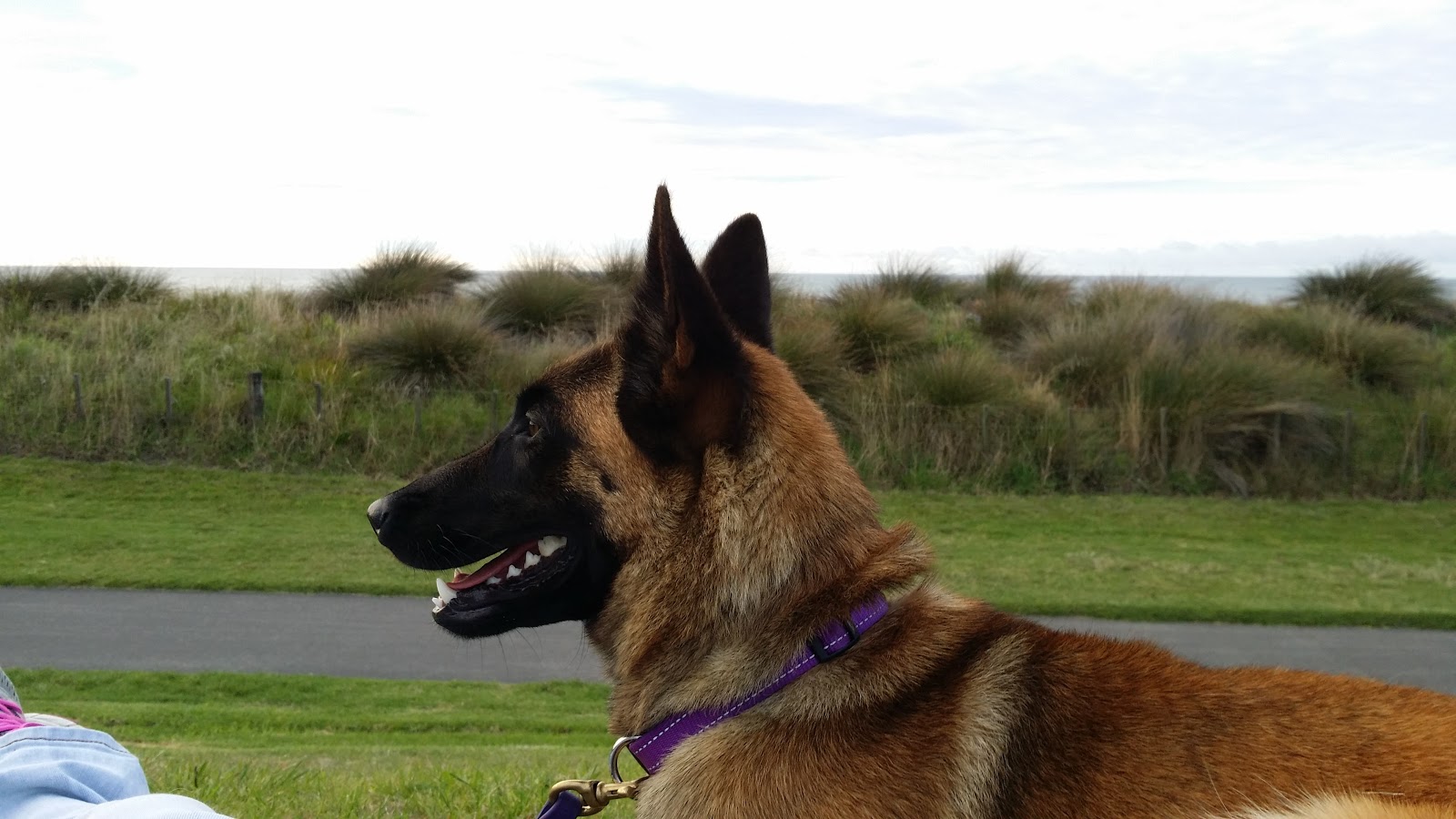
Average Height: 22 to 26 inches
Average Weight: 40 to 80 pounds
Defining Physical Characteristics: Lean, muscular bodies, short coats, black face mask, and colors that include fawn, mahogany, and red. It is sometimes mistaken for a German Shepard.
History: As to be expected, the Belgian Malinois is native to Belgium. The breed was developed in the late 1800s and was named after the city of Malines, where it was developed and many of them were trained.
Pros: This breed is often used as a police dog, because it is strong, agile, and has a lot of energy. It is also highly trainable which means you can teach it how to defend your family specifically. They also have strong search and rescue abilities, which is fantastic for any family with young kids! They are slightly smaller than some of the other dogs on this list, but they are just as powerful. This is good for families that do not want to live with a giant animal, but still want a formidable creature that will jump to protect them at a moment’s notice.
Cons: These dogs will require a lot of specialized training in order for them to feel comfortable in new situations. Without that training, this dog could potentially always be on edge. They also require a lot of exercise in order to maintain happiness and athleticism, which can seem like a burden to some families.
Bullmastiff

Average Height: 24 to 27 inches
Average Weight: 100 to 130 pounds
Defining Physical Characteristics: Short, wrinkled face with a black mask, short hair, coloring that includes fawn, red, and brindle (patterned fur).
History: In the mid-1800s, gamekeepers in England needed a way to protect their game from poachers. They experimented with cross-breeding and wound up with the Bullmastiff, which is a cross between a bulldog and a mastiff. This breed has even served as a guard dog for the Da Beers diamond mines in South Africa.
Pros: Bullmastiffs have a natural protective streak, but they are also incredibly friendly and kind to creatures that pose no threat. For this reason, they are a fantastic family dog as they are not known to harm children. They are natural protectors and excellent companions. They are also friendly with other animals, are incredibly playful, and do not shed a lot.
Cons: This breed will need structured training to reenforce its natural instincts. It is not a perfect guard dog right out of the womb. They are considered to be of medium intelligence, which is why their training program must be strict and absolutely has to be reinforced.
Cane Corso
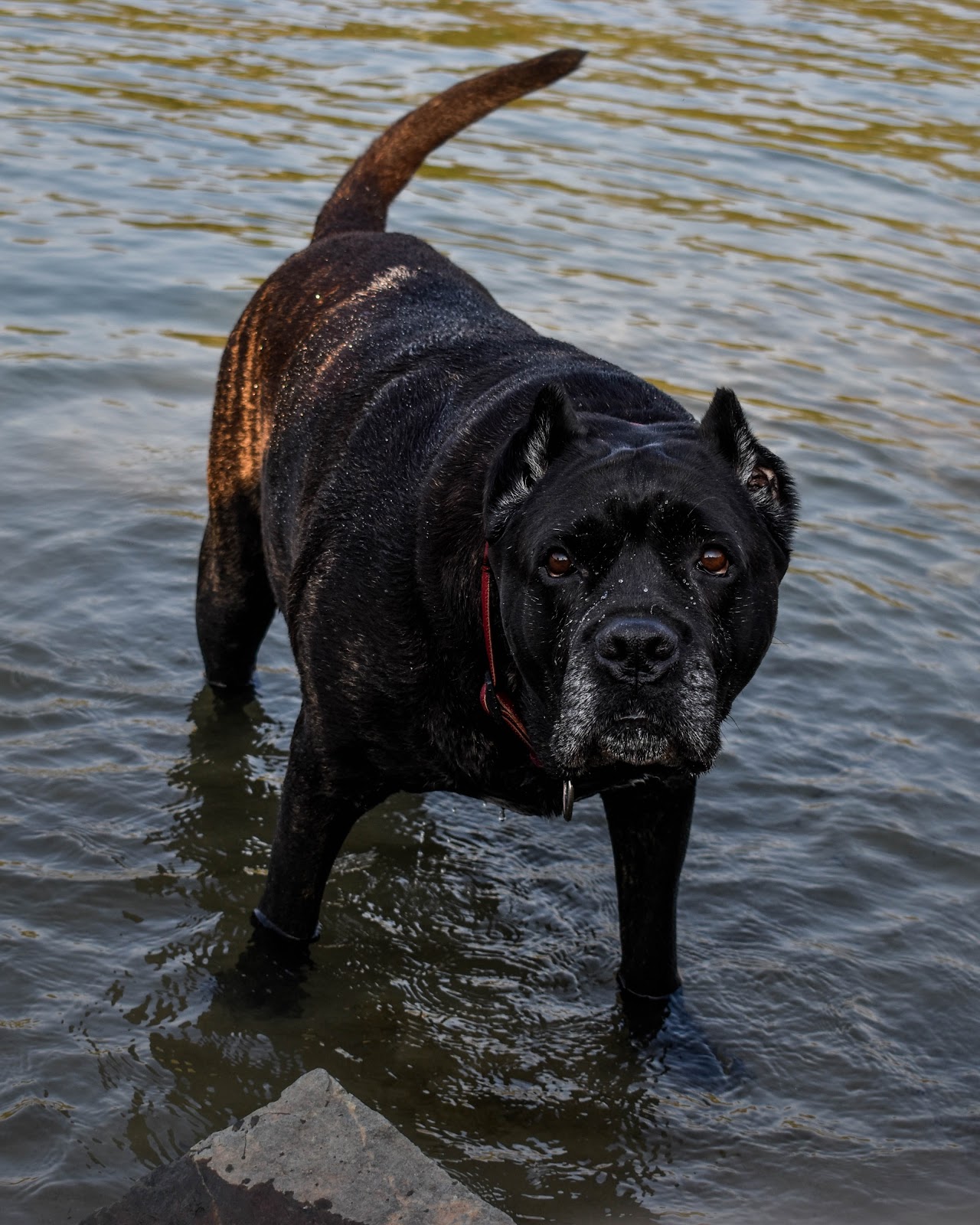
Average Height: 23.5 to 27.5 inches
Average Weight: 80 to 120 pounds
Defining Physical Characteristics: Highly muscular, large heads, short fur in any combination of black, gray, fawn, red, and brindle. It may also have a gray mask.
History: This breed originated in Italy and can actually be traced back to ancient times. In early human history, this breed served as a guard dog, a war dog, and a hunting dog. Its name is actually a derivative of the Italian word for “dog” and the Latin term for “protector.”
Pros: This dog is large, powerful, and has a deeply rooted history as a protector. In addition, it has a deep-toned and intimidating bark that can easily ward off intruders. Its personality is considered noble, and it will take its guarding duties very seriously.
Cons: If this dog is not given a “job” like exercise or guarding, it will get bored and fill its time by digging holes in your yard or chewing up your belongings. In order to reap the full benefits of a Cane Corso, you must be willing to train it in order to hone its natural skills and exercise it so that it stays engaged and entertained.
German Shepherd
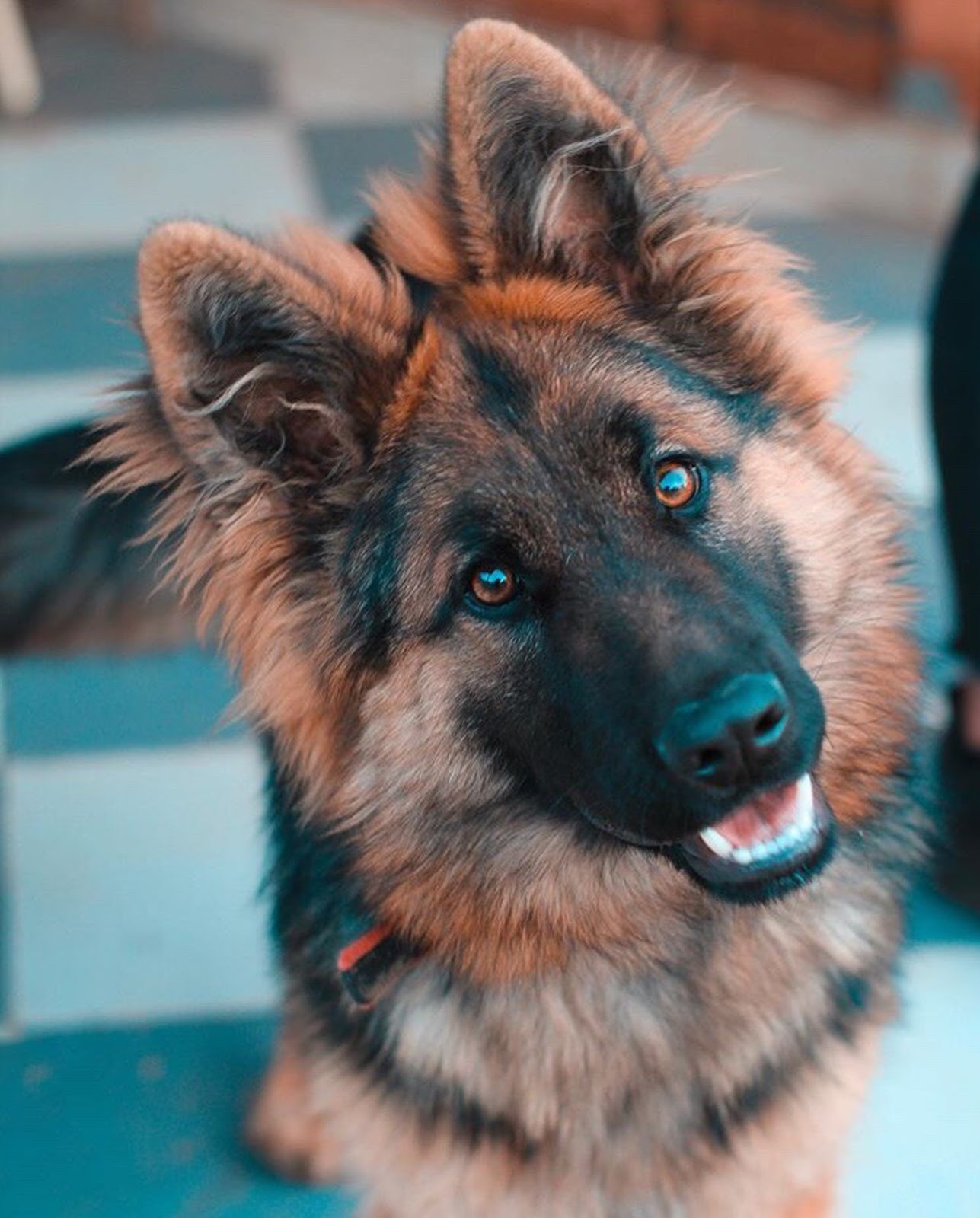
Average Height: 22 to 26 inches
Average Weight: 60 to 100 pounds
Defining Physical Characteristics: Well-defined muscles, coarse, medium-length fur, pointed ears that stick straight up, black coloring around the face, overall coloring that includes fawn, mahogany, and black.
History: This particular breed was developed in Germany in 1899. It is also known as a Shepherd Dog or an Alsatian, because during WWII the name “German” was dropped.
Pros: These dogs are incredibly affectionate and incredibly energetic. Their dedication, focus, and trainability make them a fantastic choice for working dogs or even police dogs. It is protective, yet gentle. Proper socialization and training can turn it into an incredible tool and companion for your family. They are considered gentle and are a great choice for families with kids.
Cons: In order for this breed to thrive, each individual dog requires roughly two hours of exercise every day. If the dog is not given an outlet for its energy and frustration, it can start engaging in destructive behavior like chewing and digging.
Doberman Pinscher
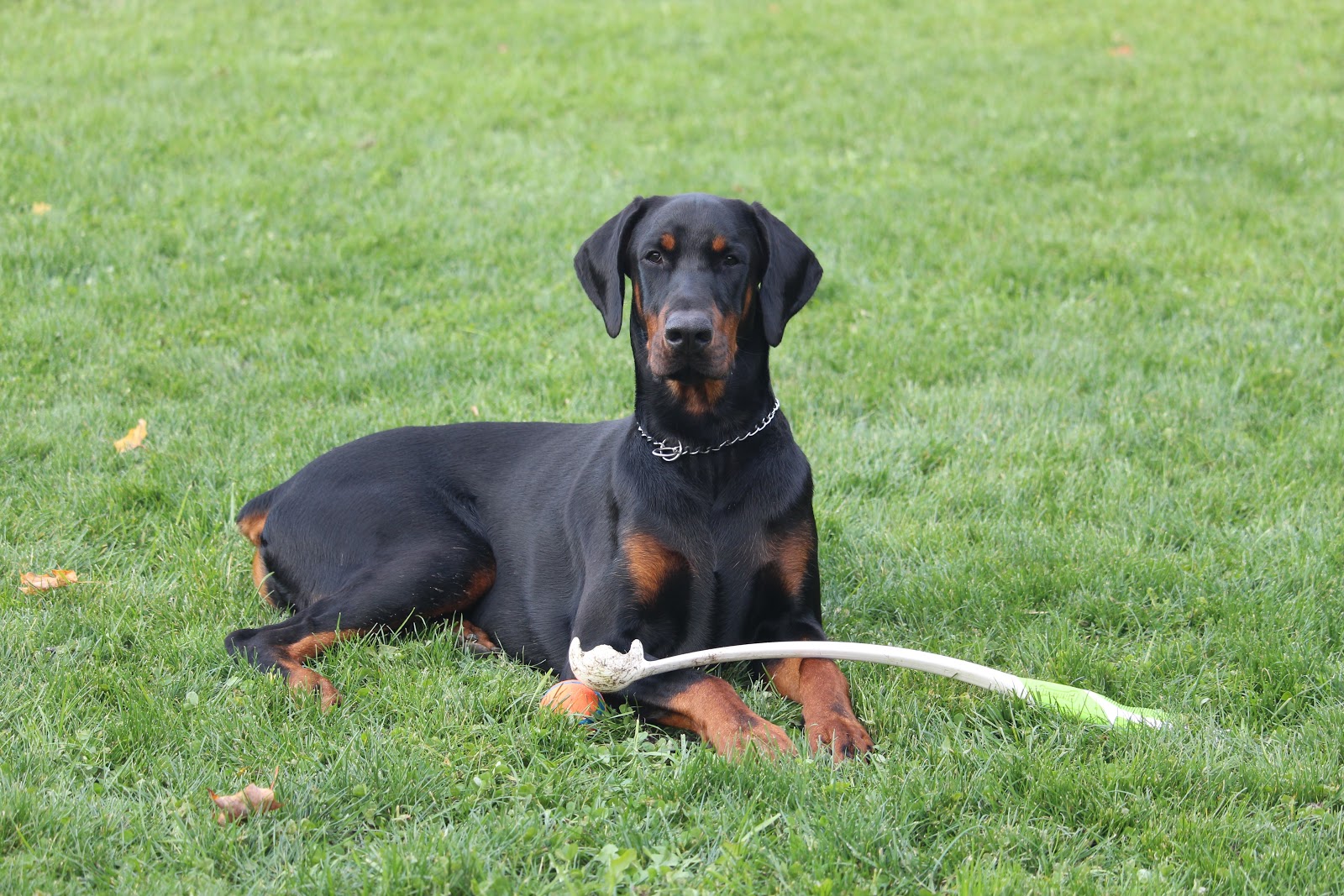
Average Height: 24 to 28 inches
Average Weight: 65 to 100 pounds
Defining Physical Characteristics: A broad, muscular chest and a short sleek coat They also often feature tall pointy ears and a docked tail, but both of those characteristics are done surgically. The and coloring that includes fawn, black, red, and even blue.
History: This breed was developed around the turn of the 20th century specifically to be a medium-sized companion guard dog. It even served as the U.S. Marine Corps’ Official War Dog in WWII.
Pros: This breed is considered incredibly intelligent and loyal. It is also very athletic, which makes it a great guard dog. It can be affectionate and docile with its family but will snap to attention at the first sign of danger. They are not often hesitant towards strangers unless something feels amiss, which is a fantastic trait in a family dog.
Cons: This dog has a reputation for being aggressive, and while this is not necessarily true, the perception can cause anxiety in others.
Komondor
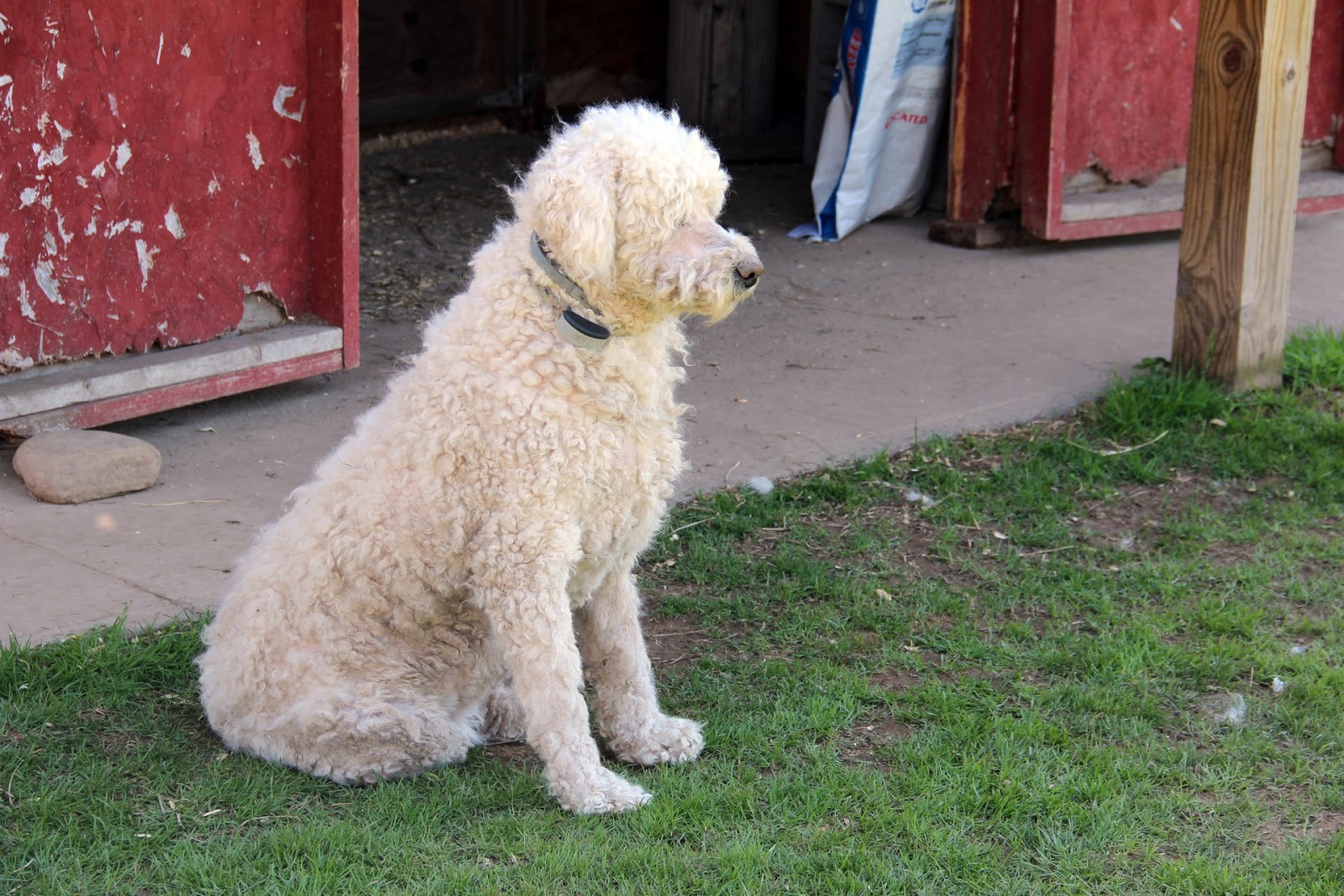
Average Height: 26 to 28 inches
Average Weight: 80 pounds and up
Defining Physical Characteristics: A white corded coat which many refer to as dreadlocks, a large head, and a muscular body.
History: This is an ancient breed from Hungary, believed to have been brought to the region by nomads in the 13th century. They were used to guard flocks of sheep since their long white coat served as camouflage among the flock.
Pros: Komondors are stereotypically understood to be guard dogs, which means that their guarding abilities will take many intruders or threatening people by surprise. Underneath the shaggy coat, this dog is strong, muscular, and fearless. It is affectionate with it’s family, yet reserved around strangers.
Cons: This dog will require a lot of socialization to ensure that it is comfortable in new and different situations. It will also require quite a bit of grooming, including frequent washings. Their preferred form of exercise is free-running, which can be challenging for owners living in highly populated areas.
Rhodesian Ridgeback
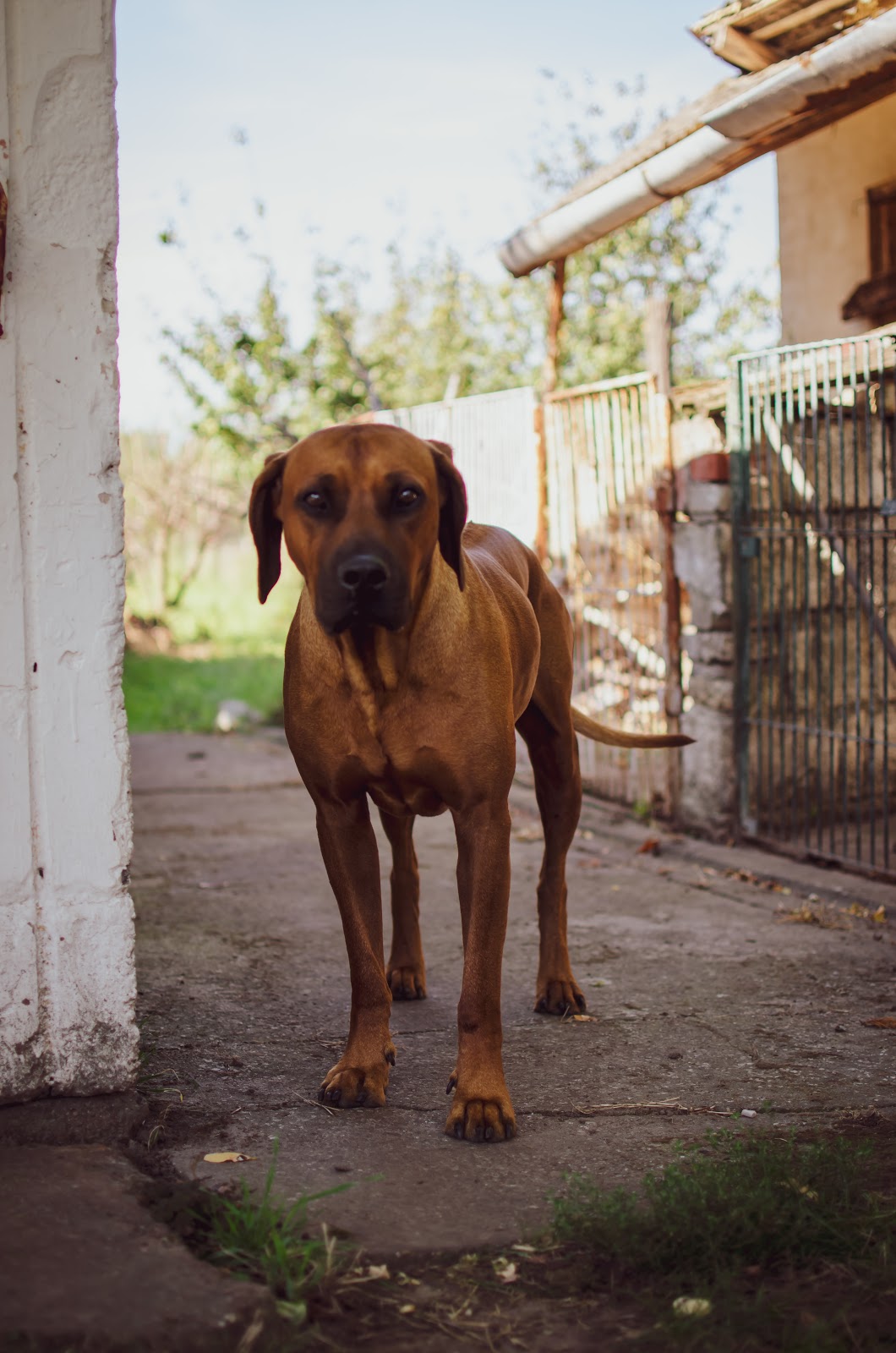
Average Height: 24 to 27 inches
Average Weight: 70 to 85 pounds
Defining Physical Characteristics: This dog gets its name from the “ridge” along its back. Beyond that, they are large, sturdy, and athletic with short, smooth coats. Their coloring can be range from wheaten to red wheaten.
History: These dogs first appear in history when European immigrants brought them to South Africa to hunt a variety of game. Later, in Zimbabwe, they trained as pack hunters to hunt big game like lions.
Pros: This dog has such a protective instinct that further training may actually be detrimental. It is an incredibly loyal and noble breed that will only require some basic obedience training before it can be considered a full and loving member of your family.
Cons: This dog is prone to chase anything that moves, so definitely keep it on a leash during its daily 30 minutes of exercise. Controlling this dog will be your biggest challenge.
Rottweiler
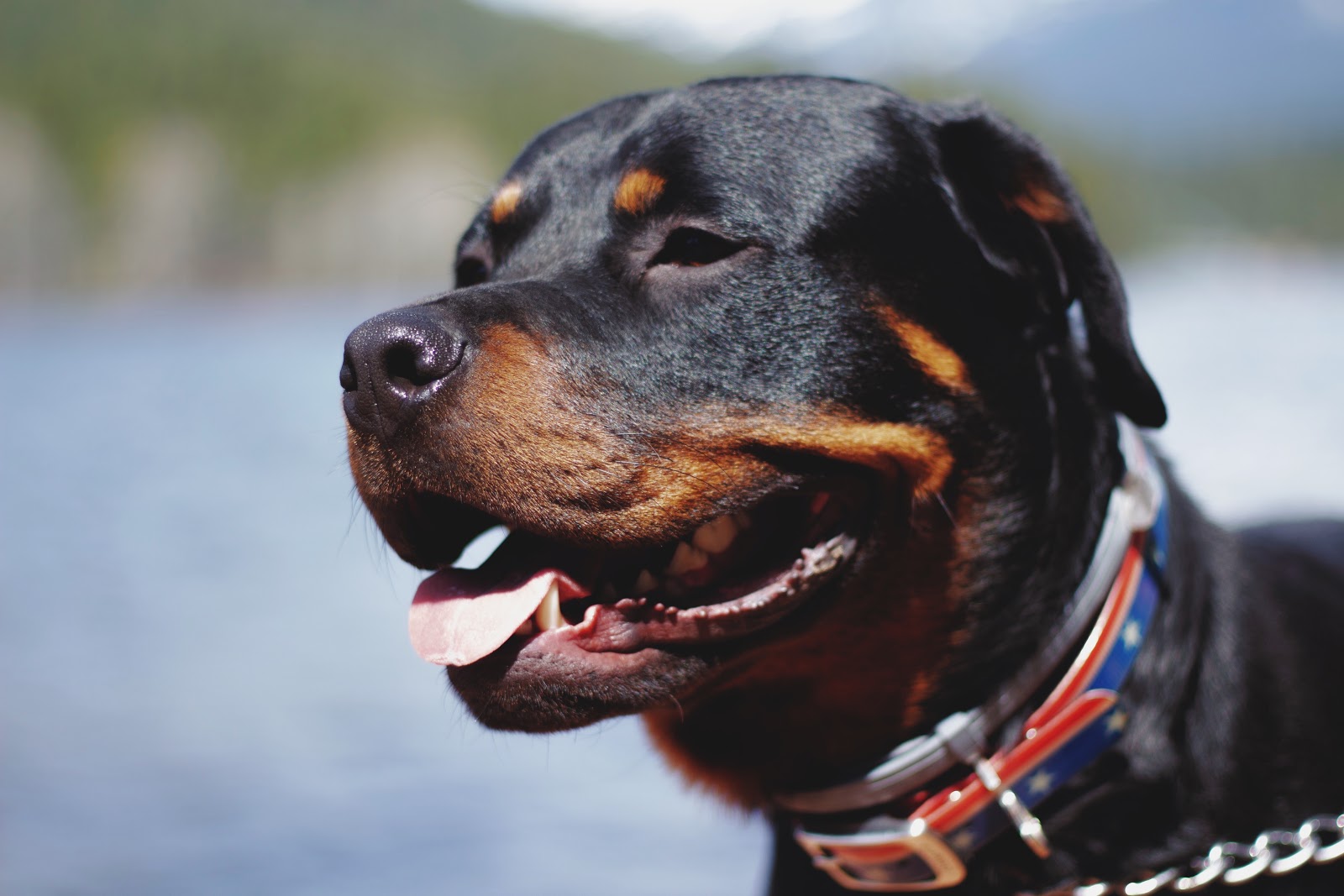
Average Height: 22 to 27 inches
Average Weight: 80 to 130 pounds
Defining Physical Characteristics: Large, muscular, robust dogs with a short double coat. These dogs are heavy and powerful. Their coloring can include black, tan, rust, and mahogany.
History: This breed can loosely be traced all the way back to ancient Rome, but its modern history includes training as cattle dogs in the German town of Rottweil.
Pros: This dog is affectionate and loyal, but can turn on a dime from goofy and loveable to intimidating in the next. This is great for families who want a goof at home, but a defender when the home is threatened. They will be inherently skeptical of strangers until they determine that the new person poses no threat, but at home with loved ones they will be giant, heavy balls of affection and love.
Cons: These dogs have an unfair reputation for always being dangerous, and may be subject to breed-specific legislation. They can be bred for aggression, so definitely talk to your breeder about temperament. Make sure you know the laws in your area before choosing a Rottweiler as a guard dog.
Tibetan Mastiff
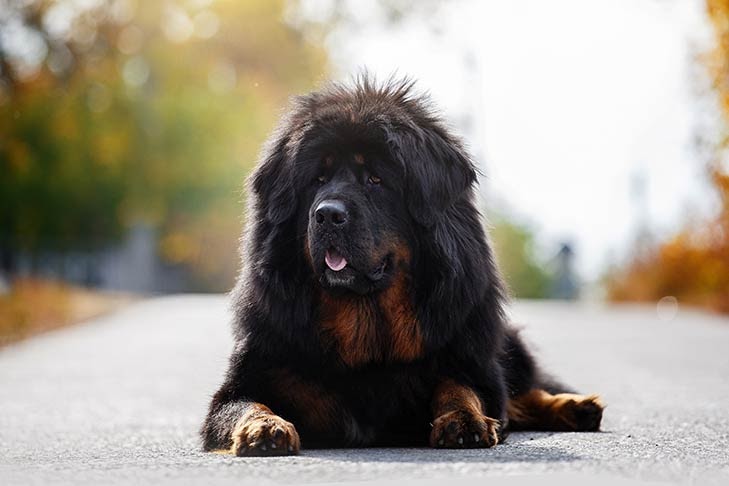
Average Height: 24 to 2 inches
Average Weight: 70 to 150 pounds
Defining Physical Characteristics: A double coat that consists of a fine outer coat with a heavy, soft undercoat. A massive head with a kind and gentle facial expression, shaggy fur with a black, brown, blue/grey, or gold coloring.
History: This is an ancient breed that has existed in central Asia for thousands of years. It was introduced to England in 1847, but didn’t make it’s way to America until the 1950s!
Pros: This breed is so loyal and devoted that it puts other guard dog breeds to shame. It is a good companion for children, and it is always alert. If it is trained and maintained properly, it will be a sentinel within your family and will protect you from any and every harm.
Cons: This dog is a lot to handle. It is so protective that it may not actually listen to an owner telling it that a particular person is a friend, not a foe. While it is good with familiar children, it can pose a threat to unfamiliar children. It is not a good choice for first-time dog owners and will require just as much devotion as it gives to you. This dog is a massive responsibility, but if handled correctly it can be an incredible guard dog and companion.
So if your family is looking for an effective, yet friendly guard dog, you are going to want to choose from one of the breeds on this list. Every dog listed here has the potential to both protect you and your loved ones from harm while becoming a beloved member of the family. Remember that owning a dog is a huge responsibility, and in order to do it properly, you will need to dedicate time and money to training and socialization. Each breed has its own requirements, so do plenty of research and consider speaking to a few experts before making a decision.
So whether you choose to go with a visually intimidating dog like a German Shepherd, or an undercover protector like the Komondor, your loved ones and family will be in good paws! These dogs are meant to protect, serve, and love fiercely. Just show that that same love in return and you will never have to worry about home or personal security again.
Link To Us!
If you would like to use this page as a resource for your county, city, state, library, or other page, please link to us! Simply copy and paste the following into your source code:
<a href="https://www.publicrecordsreviews.com/education-center/top-10-friendly-home-guard-dogs"></a>
